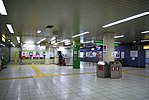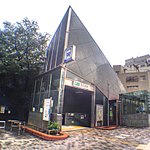Miyagino stable

Miyagino stable (宮城野部屋, Miyagino-beya) is a stable of sumo wrestlers, part of the Isegahama ichimon or group of stables. It was founded by the 43rd yokozuna Yoshibayama as Yoshibayama dōjō while he was still an active wrestler, before changing to its current name in 1960.In August 2004 former jūryō division wrestler Kanechika took over in controversial circumstances from former maegashira Chikubayama, who had been in charge since 1989. Unusually, the new stablemaster was from a different ichimon (Kanechika belonged to Kitanoumi stable, part of the Dewanoumi ichimon, in his days as an active wrestler). Kanechika was able to take control of the stable because he married one of the daughters of the 9th Miyagino's widow, who owned the toshiyori name, which Chikubayama was only borrowing, and was adopted by her as her son. Chikubayama, who had guided future yokozuna Hakuhō to the top division, was able to stay on as a coach in the stable by acquiring the Kumagatani name. However, in December 2010 he regained control of the Miyagino name and stable after Kanechika was disciplined by the Sumo Association for being caught on tape discussing match-fixing. As of January 2021, the stable had 16 wrestlers.In March 2020 the stable recruited, on Hakuho's recommendation, a 2 meter tall Mongolian born wrestler named Hokuseihō. He was raised in Hokkaido from the age of five, allowing Miyagino to circumvent the Sumo Association's one foreigner per stable rule. He won consecutive championships in the second half of 2020 with perfect records in the jonokuchi, jonidan and sandanme divisions. In July 2021 he won the makushita championship and was promoted to jūryō. Miyagino stable missed two tournaments in 2021 due to outbreaks of COVID-19. The stable withdrew from the January basho after Hakuhō tested positive, and from the September basho after Hokuseihō and another lower-division wrestler tested positive.
Excerpt from the Wikipedia article Miyagino stable (License: CC BY-SA 3.0, Authors, Images).Miyagino stable
Sumida
Geographical coordinates (GPS) Address Nearby Places Show on map
Geographical coordinates (GPS)
| Latitude | Longitude |
|---|---|
| N 35.6941 ° | E 139.8064 ° |
Address
130-0023 Sumida
Japan
Open on Google Maps









